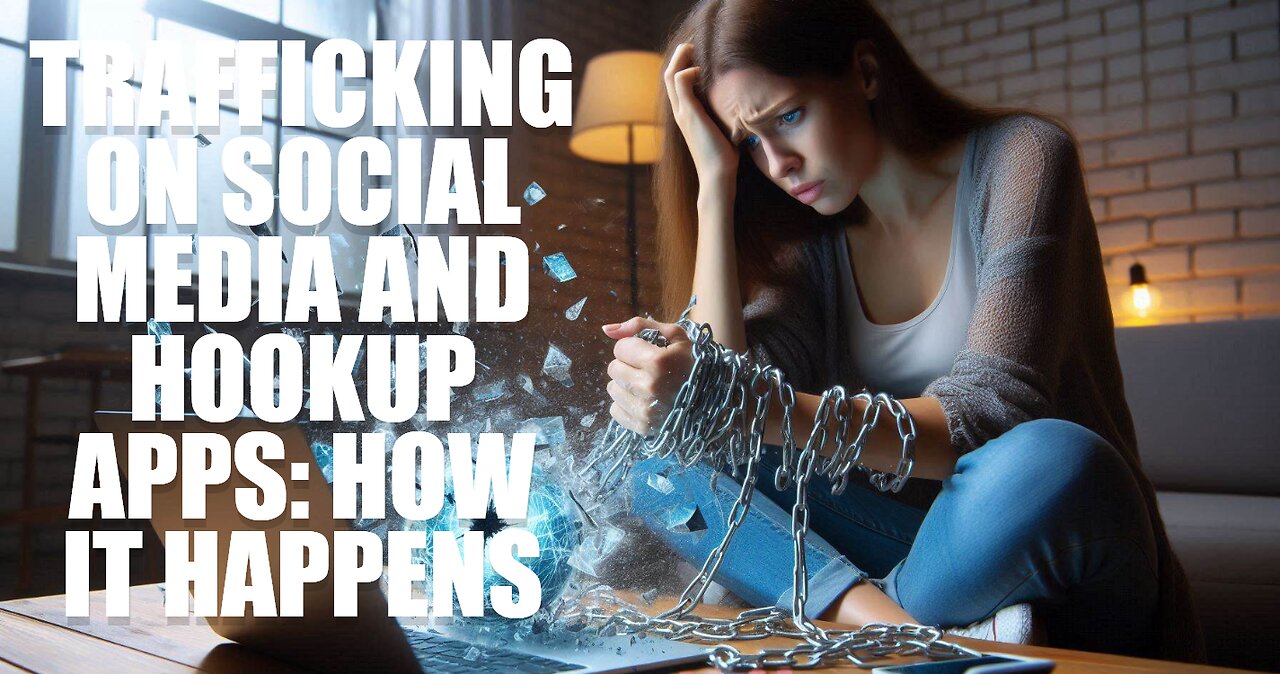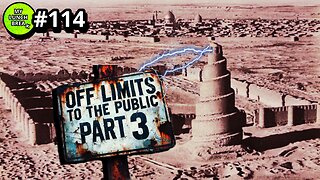Premium Only Content

Trafficking on Social Media and Hookup Apps: How It Happens
Tips from Government Sources:
Be cautious of unsolicited messages and suspicious profiles that seem too good to be true.
Report suspicious behavior to platforms and law enforcement.
Don’t share personal information with strangers or engage in private chats without vetting who you're talking to.
Look out for manipulation tactics, such as love bombing, promises of money, or employment offers that seem shady.
If something feels off, trust your instincts and disengage.
This song aims to raise awareness while empowering listeners to stay safe and informed.
"Trafficking Through Social Media Streets" is a hard-hitting song that exposes the dark side of social media platforms, where traffickers lure victims with promises of love, fame, and money. Through powerful lyrics, this track urges listeners to stay vigilant, recognize the signs, and protect themselves and their loved ones from online exploitation. The digital world may seem safe, but beneath the surface lies a hidden threat—this song is a call to be alert and break the cycle of trafficking.
🎶 Stay alert, stay strong! Like, subscribe, and share!
🔗 Spread the word to raise awareness about the dangers of trafficking through social media.
💬 Comment below on how we can protect each other from online predators and keep social media safe.
💸 Support us via PayPal (link in description) to continue making music that inspires change and action.
Follow us for updates on new releases and learn how to stay safe online!
Hashtags:
#TraffickingThroughSocialMedia #OnlineSafety #StopHumanTrafficking #SocialMediaAwareness #FightForFreedom #StayVigilant #ProtectYourCrew #EndExploitation #BreakTheChains #DigitalAwareness #EmpowermentThroughMusic If someone is enslaved or trafficked, it’s crucial to seek help in a safe and discreet manner. Here’s what to do in the United States or any other country:
1. Seek Immediate Help if Possible
Call Emergency Services: If you are in immediate danger, call your local emergency number (911 in the U.S.).
National Human Trafficking Hotline (U.S.): Call 1-888-373-7888 or text "HELP" to 233733 (BEFREE). This service is available 24/7, confidential, and connects you with trained professionals who can help you find safety and resources.
2. Use Safe Locations for Communication
Reach out from a safe place where you are not monitored, such as a trusted business, a hospital, or a police station.
If you can access a phone, consider using a public phone or someone else’s phone to avoid being tracked.
3. Contact a Trusted Authority or NGO
United States: The U.S. Department of Health and Human Services and U.S. Department of Homeland Security can provide support. Reach out through their trafficking hotlines or local offices.
Internationally: Contact the nearest embassy or consulate of your country for assistance if you are trafficked outside your home country. They can help you connect with local resources and authorities.
4. Document Information Safely
If you have access to write things down safely, try to document:
Your location (any landmarks, addresses, or businesses nearby)
Names of people involved in trafficking or enslaving you
Details about your situation, which may help authorities locate you or assist in rescuing others later.
5. Use Trusted Websites for Guidance
In the U.S., visit the National Human Trafficking Hotline (https://humantraffickinghotline.org) for resources and advice.
Globally, organizations like UNODC (United Nations Office on Drugs and Crime) provide resources for victims and can connect you with local NGOs and services.
Use government sites like U.S. Department of State’s trafficking page (https://www.state.gov/humantrafficking) for additional resources and contact points.
6. Find a Local NGO or Shelter
Contact local shelters or NGOs that specialize in helping trafficking victims. Many have partnerships with the government and offer confidential assistance.
Examples include Polaris Project in the U.S. and international organizations like Hope for Justice or A21.
7. Protect Yourself While Planning to Leave
Try to blend in and avoid raising suspicion if you cannot escape immediately.
Connect with local authorities or organizations when you have a safe opportunity, and follow their guidance for leaving your situation safely.
These steps are designed to help trafficked individuals connect with government resources and professional help.
-
 14:55
14:55
Exploring With Nug
8 hours ago $8.20 earnedWe Found Semi Truck Containers While Searching for Missing Man!
40.4K7 -
 27:57
27:57
MYLUNCHBREAK CHANNEL PAGE
16 hours agoOff Limits to the Public - Pt 3
74.8K56 -
 38:07
38:07
Michael Franzese
8 hours agoLeaving Organized Crime and Uncovering Mob in Politics: Tudor Dixon and Michael Franzese
70.1K14 -
 2:42:54
2:42:54
Jewels Jones Live ®
2 days agoAMERICA IS BACK | A Political Rendezvous - Ep. 111
58.9K45 -
 8:47:33
8:47:33
Due Dissidence
1 day agoLIVE: Workers Strike Back Conference ft. Chris Hedges, Jill Stein, Kshama Sawant, and More!
102K55 -
 8:36:37
8:36:37
Right Side Broadcasting Network
5 days agoLIVE REPLAY: CPAC 2025 Day Three with President Donald J. Trump - 2/22/25
433K96 -
 1:05:34
1:05:34
The Big Mig™
17 hours agoConfirmed Kash Patel New FBI Director, Bring On The Pain |EP483
102K28 -
 53:59
53:59
Tactical Advisor
12 hours agoThe Vault Room Podcast 009 | Everyone Getting $5000?!
80.5K12 -
 2:04:44
2:04:44
TheAlecLaceShow
23 hours agoLive at CPAC | Interviews with Dean Cain, Rep. Comer and more! | The Alec Lace Show
87K6 -
 LIVE
LIVE
Major League Fishing
3 days agoLIVE Tackle Warehouse Invitationals, Stop 1, Day 2
266 watching